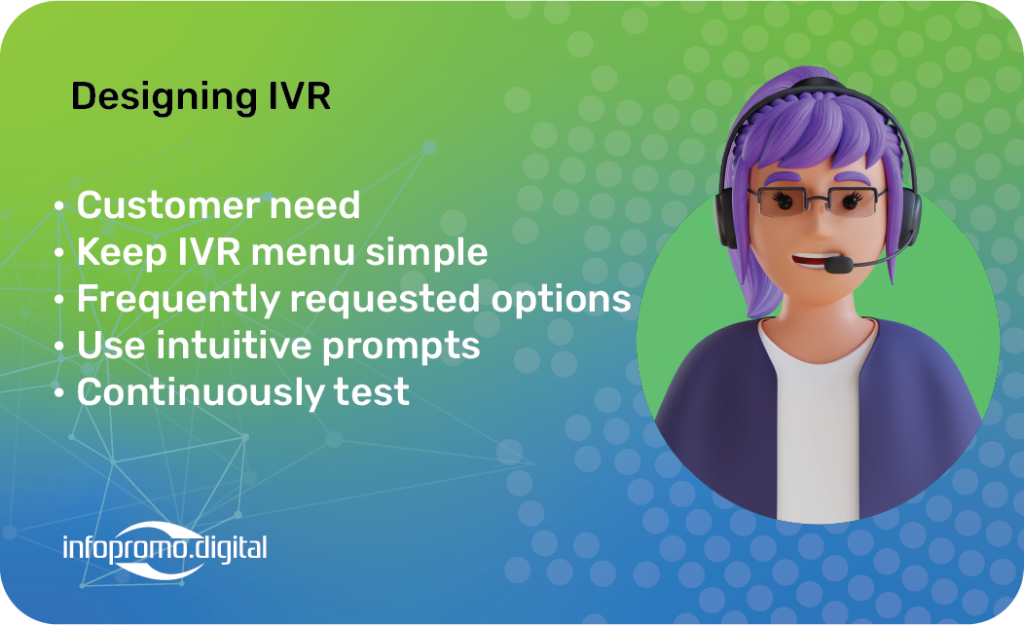
In today’s fast-paced world, customer satisfaction is paramount, and an intuitive Interactive Voice Response (IVR) system plays a crucial role in achieving this goal. Designing a user-friendly call flow enhances customer satisfaction and ensures efficient call routing, ultimately leading to improved customer service and operational efficiency. This blog delves into essential tips and techniques for crafting effective IVR call flows that meet these objectives.

Understand Your Customers The foundation of a user-friendly call flow lies in understanding your customers’ needs and preferences. Conduct thorough research to identify common customer queries and issues. Analyze call patterns and gather feedback to gain insights into customer behavior. By understanding your audience, you can design a call flow that addresses their needs and provides a seamless experience.
Keep It Simple Simplicity is key to designing an effective IVR system. Avoid overwhelming customers with too many options or lengthy menus. Limit the number of menu levels to ensure callers can quickly navigate through the system. Use clear and concise language to guide customers, and avoid jargon or technical terms that may confuse them.
Prioritize Popular Options Identify the most frequently requested options and place them at the beginning of the menu. This approach reduces the time customers spend navigating through the system and increases their satisfaction. Additionally, consider offering a “quick access” option for frequent callers, allowing them to bypass the main menu and directly reach their desired destination.
Use Intuitive Prompts Design intuitive prompts that guide customers smoothly through the call flow. Use natural language and provide clear instructions for each option. Incorporate dynamic prompts that adjust based on the caller’s previous interactions, making the experience more personalized. For example, if a customer has recently made a payment, the system can acknowledge this and offer relevant options.
Implement Error Handling Effective error handling is essential for a user-friendly call flow. Anticipate potential errors and provide clear instructions for customers to rectify them. For instance, if a customer enters an invalid option, prompt them to try again or offer an option to speak with a live agent. Ensure the system can gracefully handle unexpected inputs and guide customers back on track.

Test and Iterate Continuous testing and iteration are crucial to maintaining an effective IVR system. Regularly review call logs and customer feedback to identify areas for improvement. Conduct usability testing with real customers to gather insights and make necessary adjustments. By continuously refining the call flow, you can ensure it remains user-friendly and aligned with customer needs.
Leverage Technology Modern IVR systems offer advanced features that can enhance the user experience. Incorporate speech recognition technology to allow customers to interact with the system using natural language. Implement data integration to provide personalized options based on customer history and preferences. Utilize analytics to monitor performance and identify trends, enabling you to make data-driven improvements.
Conclusion Designing a user-friendly call flow is essential for enhancing customer satisfaction and call routing efficiency. By understanding your customers, keeping the menu simple, prioritizing popular options, using intuitive prompts, implementing error handling, continuously testing, and leveraging technology, you can create an IVR system that provides a seamless and satisfying experience for your customers.




